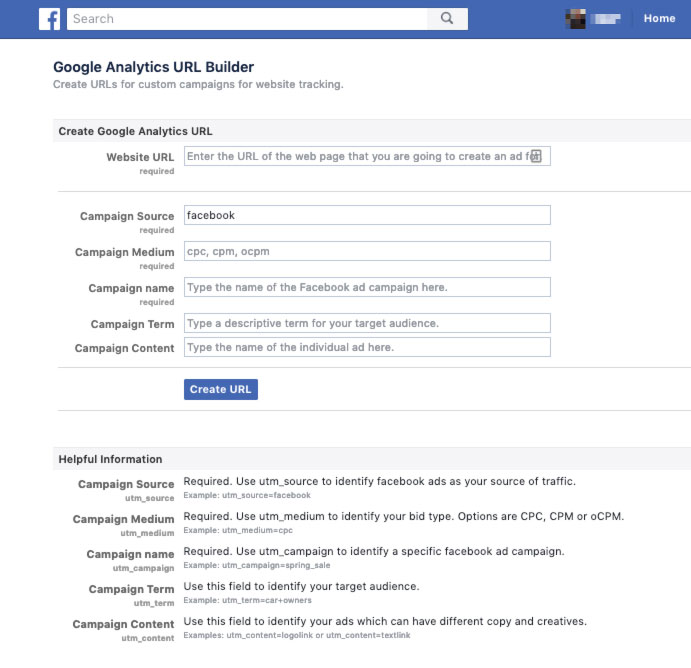

The caveat does not apply to utm_source and utm_medium, which must always be lowercase). (The exception is if you need to attach data from Google Analytics to another tool for analysis).

#Google analytics utm builder code
In case you have multiple links pointing to the same URL (such as an email with two CTA buttons), this code will help you track which link was clicked. The parameter is utm_campaign.Įxample: &utm_campaign=example-campaign 4. For example, you can use the campaign parameter to differentiate traffic between different Facebook Ad campaigns or email campaigns. The campaign name parameter allows you to track the performance of a specific campaign. The parameter is utm_mediumĮxample: &utm_medium=cpc 3. The medium parameter tracks what type of traffic the visitor originated from – cpc, email, social, referral, display, etc. Sources you may track could be facebook, google, bing, or the name of an email list. The parameter added to your url is utm_source. The source parameter allows you to track where the traffic originated from. Here’s exactly what you can track with each: 1. The first 3 are by far the most used parameters (Source, Medium, Campaign), but for additional insights, you may also choose to track all 5. It’s super simple to use so your entire team can use it.Īre you ready to take your company to the next level to make data-driven decisions?
#Google analytics utm builder update
UTMs will allow you to understand better where your traffic is coming from beyond the standard referring URL you would typically get.įor example, consider setting up a unique URL for each status update or wall post you use when promoting a link on Facebook. You can use the UTM tracking code regardless of which platform you use. With our Google Analytics URL Builder, you can easily tag URLs with custom campaign variables and then use an automated reporting tool like Google Analytics to keep track of progress and share with your clients or internal stakeholders.Ĭampaign variables allow you to track which of your promotions are generating the most traffic/conversions and can be used with Google Analytics, Mixpanel, Kissmetrics and most other analytics platforms. Use this Google Analytics URL builder to track your campaigns. So, how do you tell which marketing campaigns were successful? Maybe your main goal is to drive traffic back to your website, convert that traffic into leads, and those leads into customers. Are you struggling to analyse your Google Analytics to make data-driven decisions?Īre you ready to start a marketing campaign a newsletter, social or some paid campaign?


 0 kommentar(er)
0 kommentar(er)
